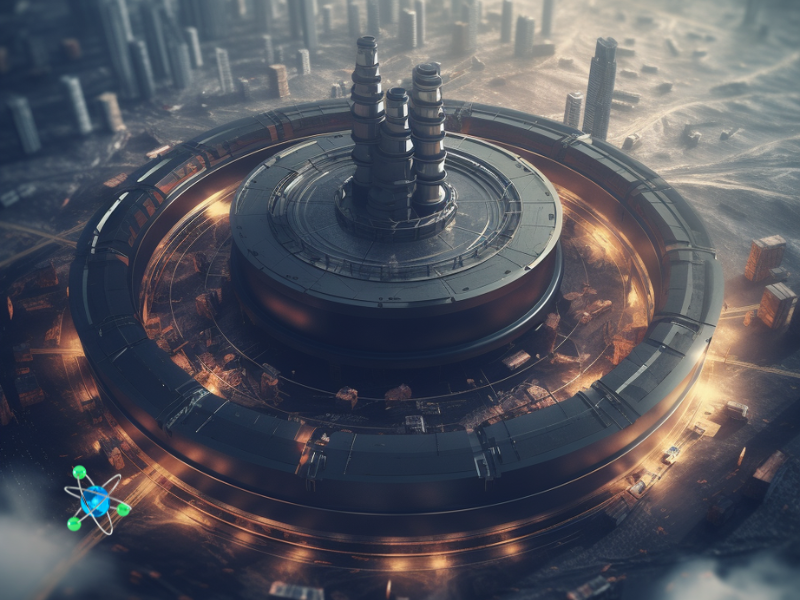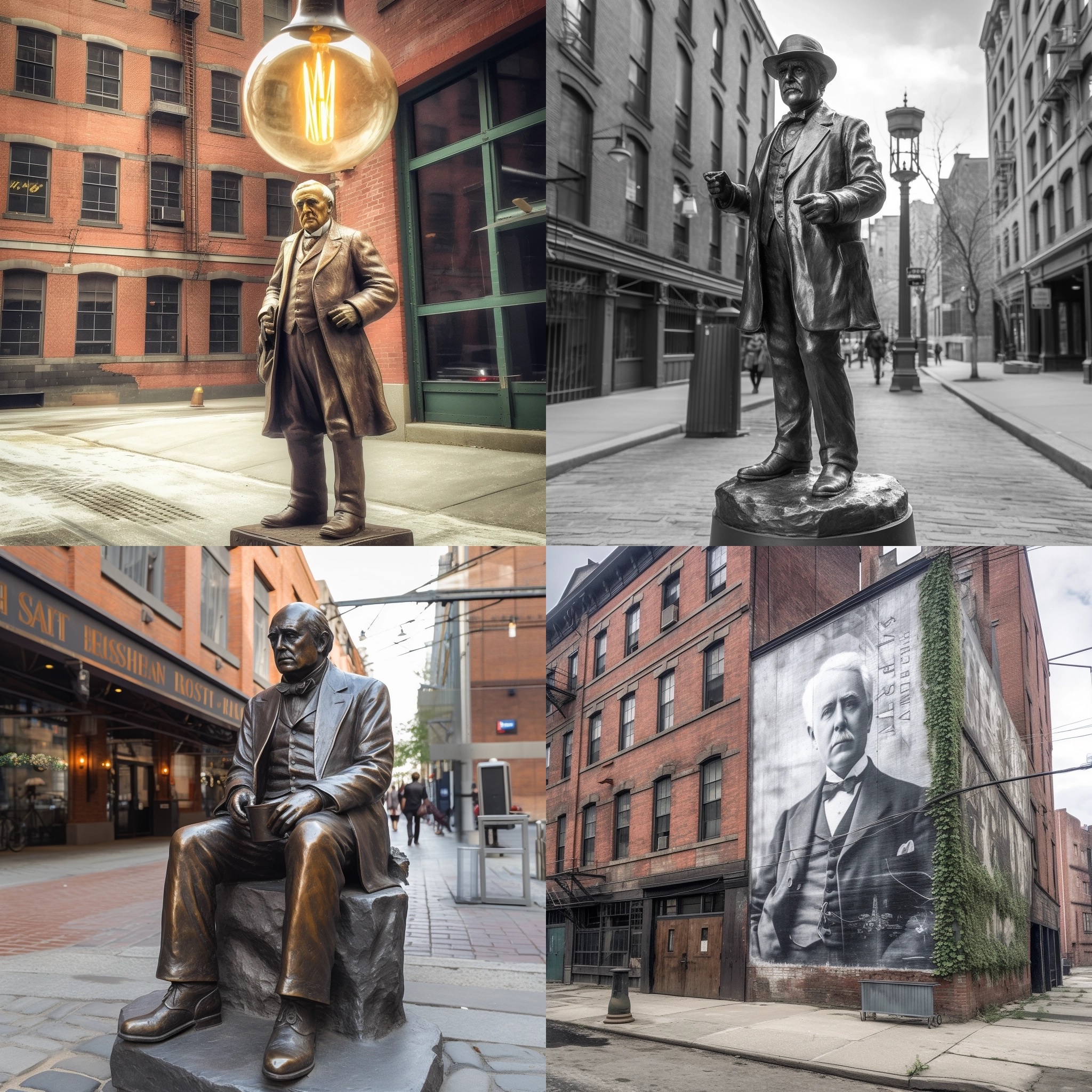
.Tourists who visit the South Street Seaport in lower Manhattan find history all around them. At the eponymous museum floats the Wavertree, an iron sailing ship from 1885. Turning north they see a 60 foot lighthouse, a memorial to those who perished with the Titanic – whose survivors docked at Manhattan’s Pier 54, now Little Island, itself a tourist destination. The memorial sits on Water Street, which used to be water until New York began expanding the island with landfill in the 1600s. Yet the most influential item there is completely gone, having burned down eight years after its construction. In 1882 on Pearl Street, Thomas Edison’s company launched the world’s first permanent electric generating station. With the technology of the time his direct current Pearl Street Station – unlike Nikola Tesla’s preferred alternating current – had to be near its customers, so the station covered an area of only about 10 square blocks. The small station was a massive upgrade for customers who until then were reliant on oil or coal gas. In the 141 years since, despite AC taking over the world, 90% of humanity having electricity access, and vast improvements in technology, most of the world’s grids remain mostly powered by a combination of fossil fuels and other steady-output sources, like hydropower and nuclear energy. As ever more places add ever more wind and solar to their grids, grid operators – and by extension the public – must face the challenges and consequences of hard-to-predict, impossible-to-control variability in wind strength and sunshine.
Most people who think about an electric grid at all likely imagine it as a pool of electrons, with all of the power plants, wind turbines, and solar panels adding electrons to the pool, and every electronic device taking electrons from the pool. In truth the grid is more akin to a network of seesaws where the number of electrons going up into the system must constantly match the number of electrons coming down out of the system, and the seesaws must all maintain a constant rate – 60Hz in the US (Tesla’s choice), 50Hz is most other nations. These grid frequencies come from the turbines in power stations rotating 60 times per second and it is crucial to maintain the frequency perfectly and constantly. Hydropower, nuclear, and fossil fuel plants spin turbines at constant rates, enabling grids to maintain a frequency easily. Variable-speed wind turbines work to alter the frequency, and both solar panels and batteries use direct current that must be converted to AC. Countless inverters convert DC to AC and transformers adjust voltage, but all of these tools and systems were based on the assumption that fixed-frequency turbines would always generate the overwhelming majority of power in a grid, with steady grid inertia keeping the system running. As the green energy transition leads countries to decarbonize their grids, wind and solar are taking over so much of some grids that the frequency synchronization – and thus the reliability – of grids becomes ever more difficult and expensive to maintain. Those challenges also lead to increased costs and delays when adding electricity to electric grids, as Nuclear Insider has discussed. Interconnection Bottleneck and the Future of Energy. Solutions exist, each with pros and cons.

One of the simplest ways to maintain a grid’s inertia and frequency is with a flywheel, essentially a huge, heavy spinning disc. The United Kingdom, with its grid-on-an-island, uses these to add 50Hz spinning to a system where wind and solar combined form about a third of electricity production. These wheels are massive, from around 50 tons to over 200 tons, and store inertia from the system. While effective, building, powering, and maintaining massive flywheels around a country simply to maintain grid frequency is an expensive proposition. A partial fix is to ensure that more power is available on demand, via batteries and other forms of energy storage. Those options – building batteries, pumping water uphill to release it downhill later, and other lift-and-release options all require substantial space, are expensive, and do not fix the core synchronization issue. Another option is to upgrade the entire system with grid-forming inverters – that is, to have all those countless inverters form power to a certain frequency instead of following whatever frequency they receive, as they all do now.
Grid-forming has many advantages. It uses much of the same type of hardware, works with wind, solar, and everything else, increases stability, and would be controlled via software – which means no need to worry about 200 ton flywheels that rotate at extreme speeds. It would even help in the extreme case of restarting a grid that has completely crashed, as Texas’ grid almost did in 2021. In developing countries and in remote areas, grid-forming would allow micro-grids to connect to the main grid more easily. Despite all of these advantages grid-forming faces three major challenges, above all the fact that it is not ready.
While numerous governments and companies are testing grid-forming technology, no nation is close to saying that it is ready to pick a grid-forming solution. Given how vast, essential, and complicated changing the core of a nation’s electric grid is, there is no room for error and no opportunity for a second attempt. Multiple successful grid-forming options will likely emerge, but each nation that pursues grid-forming is likely to choose a single option and commit to it. While it is unclear how long it will take researchers to perfect grid-forming tech, most developed nations are already deep into the wind and solar transition and do not have years to wait for grid-forming eventually to arrive.
The second challenge with grid-forming is that it will require massive investment to add all of those software-powered inverters to a nation’s electric grid if all of the inverters are replaced at once. Some places will choose to replace inverters gradually, requiring all replacements and new systems to be grid-forming enabled. The third challenge of software-driven grid-forming is that software is more vulnerable to attack than hardware. The hardware-driven inertia of all grids today means that it is difficult to take down an electric grid via cyberattack. Russia attempted to take down Ukraine’s grid in 2015, but was only able to disrupt power for a handful of hours for about 2% of the population. Russia tried again at the start of its invasion last year, and failed completely. A software-driven grid, by contrast, would require less effort to disrupt in such a way to cause widespread damage if successful. A grid-formed system would thus need to have powerful cyberdefenses that are actively maintained and improved the way that operating systems and digital networks are, which will delay when they are ready for deployment.
The nature of nuclear energy – zero emissions, locatable anywhere, with a steady frequency – avoids the emissions of fossil fuels, the geographic requirements of hydropower, and the variable frequency and DC issues of wind and solar. As nations upgrade their grids and decarbonize away from fossil fuels, adding more nuclear power to grids would help to maintain their frequencies and balance renewables while giving researchers more time to perfect grid-forming technology, and to reduce the funds that must be spent on flywheels and other inertia tools. Given that grid frequency attracts no public attention, however, it is unclear how much attention policymakers and regulators will give to this little-noticed side benefit of nuclear power.

Thomas Edison knew how to draw positive attention to his work. When he flipped on the Pearl Street Station on September 4th, 1882, Edison-installed lamps in the New York Times’ building turned on. When the Times reported on the Pearl Street Station the next day it also gave a glowing review of Edison’s lights: “the light was more brilliant than gas and a hundred times steadier…as soon as it is dark enough to need artificial light, you turn the thumbscrew and the light is there, with no nauseous smell, no flicker and no glare…the light was soft, mellow, and grateful to the eye.” At a time when much of the public wondered whether electricity in their homes would be safe and regulation of electricity barely existed, Edison knew that persuading people to appreciate home electricity involved more than technical safety descriptions. It involved eloquent descriptions of what electricity meant in people’s lives, and how it was superior to oil and coal gas. Making people feel how nuclear is superior to oil and coal is a lesson that the nuclear industry could learn from Edison today.
